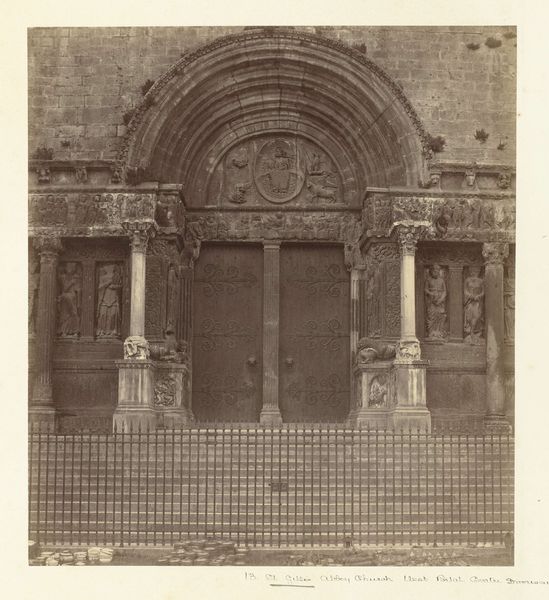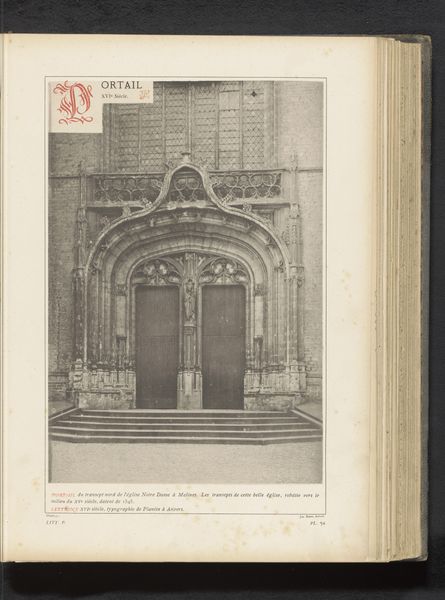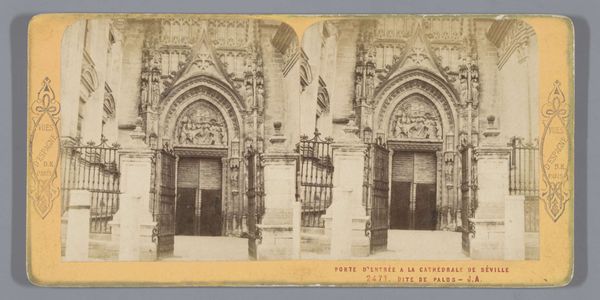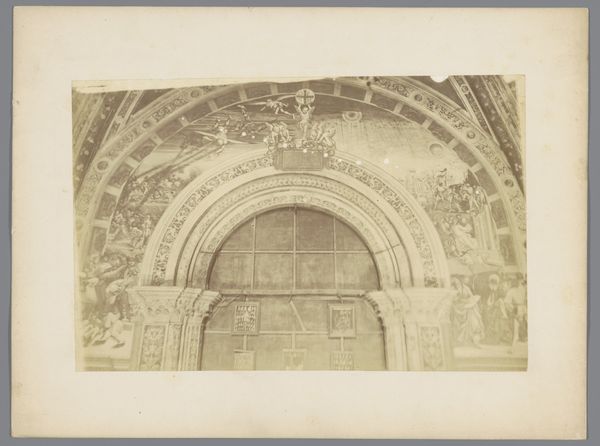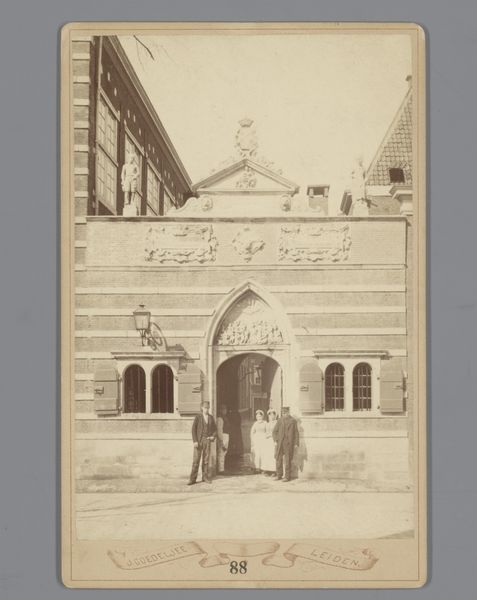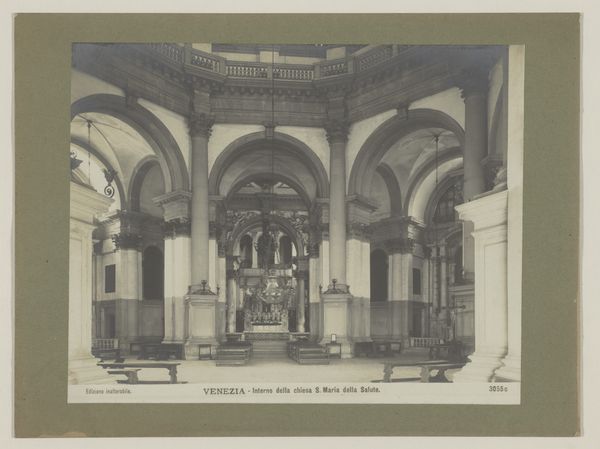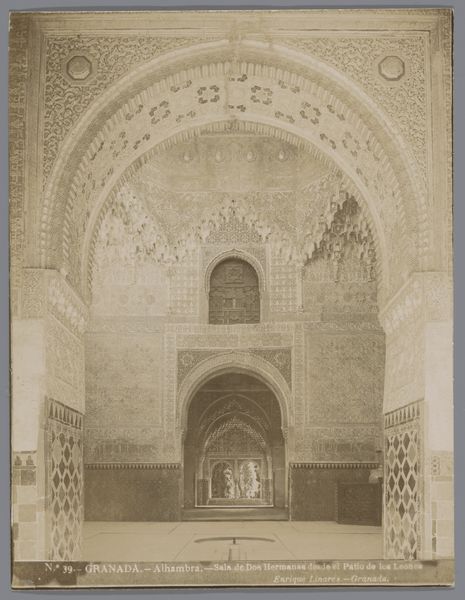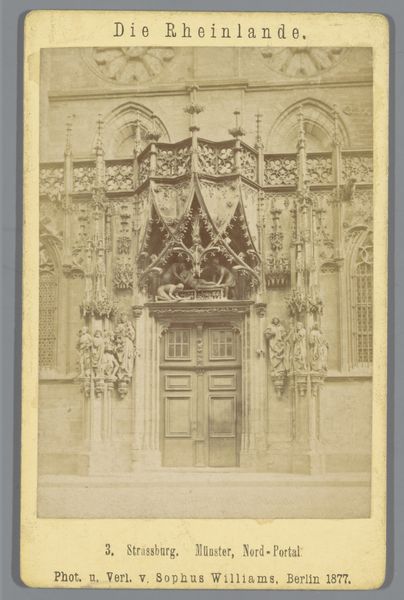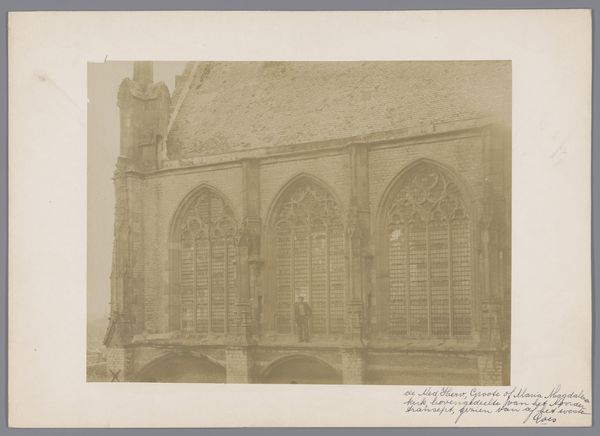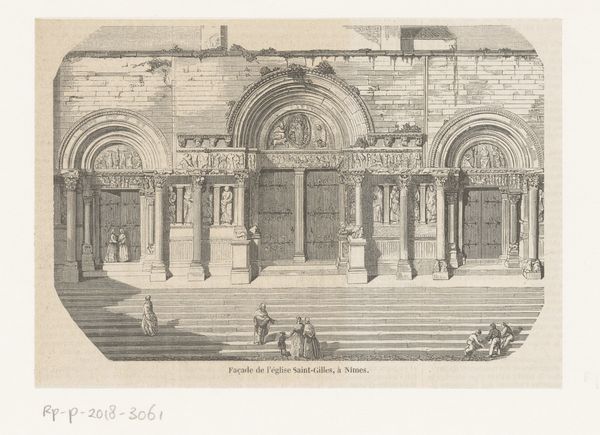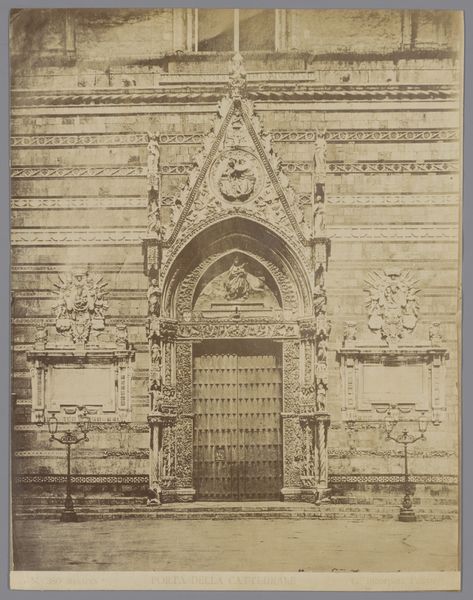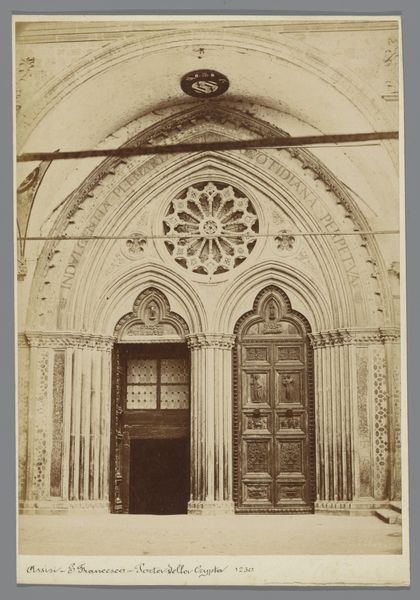
Portugese paviljoen op de Wereldtentoonstelling te Parijs in 1878 1878
0:00
0:00
Dimensions: height 107 mm, width 164 mm
Copyright: Rijks Museum: Open Domain
Curator: Standing before us is an albumen print, a photograph taken by Adolphe Block in 1878, entitled "Portuguese Pavilion at the World Exhibition in Paris." It is now housed at the Rijksmuseum. Editor: Whoa, intense detail! At first glance, it's like stepping back into a bygone era of grand architecture and the most incredible stone carvings. The light almost washes everything into this unified, elegant monotone. A world steeped in history, wouldn't you agree? Curator: Indeed! Albumen prints, popular in the late 19th century, lend themselves to such tonal unity. The architecture is a nod to Neoclassicism, an aesthetic revisiting classical ideals, but also layered with the ornate details suggesting power and influence. It feels quite palatial and ornate to our modern eye. Editor: You got it! You can really see it in the intricate designs above the door, which seem to hint at some symbolic narrative. Then the small figure sitting off to the side looks absolutely diminutive by comparison—almost dwarfed by the architectural prowess. Do you think it symbolizes anything in particular? Curator: It’s quite possible! He sits almost like a guardian before this portal. Architecture at World's Fairs often embodies cultural aspiration and historical memory. Notice how the figures along the facade echo this, reminiscent of classical statuary—perhaps a conscious attempt to link Portuguese heritage to an ancient lineage, but perhaps its about their status at the world fair as well. Editor: Okay, interesting take, that connects to what it signifies on a historical or cultural scale. But zooming in makes it really feel less timeless and more frozen, like a brief moment the artist tried to hold onto forever. Like an idealized version of this building? Or maybe to signify their achievements and standing in that specific time period, to show that history matters... Curator: An interesting perspective! Albumen prints offered, at that time, a way of memorializing events in accessible formats for widespread appreciation, embedding particular symbolic viewpoints, shaping perceptions through popular media... I'd also note that photography held tremendous importance as it showed the structure in a relatively honest format. It's not filtered or idealized. Editor: Yes! Like an instant portal in paper form! Looking at the piece this way really helped to shift my view; and now I see this grand doorway—like a historical gateway, as both an architectural accomplishment and a memory frozen in time. Curator: Indeed. It has encouraged new understandings of symbolic function within photography and architecture. Thank you for accompanying us.
Comments
No comments
Be the first to comment and join the conversation on the ultimate creative platform.
